At the dawn of the 21st century, few national projects were as ambitious or controversial as the Millennium Dome. Opened on New Year’s Day 2000, it celebrated Britain’s optimism and hope for the future through a vast exhibition of art, science, and imagination. Millions visited, eager to discover what lay inside the Millennium Dome.
Located on the Meridian Line at Greenwich in London, the Dome promoted a forward-looking, modern Britain. However, for Prime Minister Tony Blair, it also symbolised New Labour’s Cool Britannia ethos of innovation, inclusivity, and economic renewal.
In this post, I take you on a rare visual tour of the zones and attractions inside the Millennium Dome exhibition, using photos I took while visiting in January 2000. Whether you’re nostalgic for the Millennium Dome Experience—or discovering it for the first time—this photo essay brings its story to life.
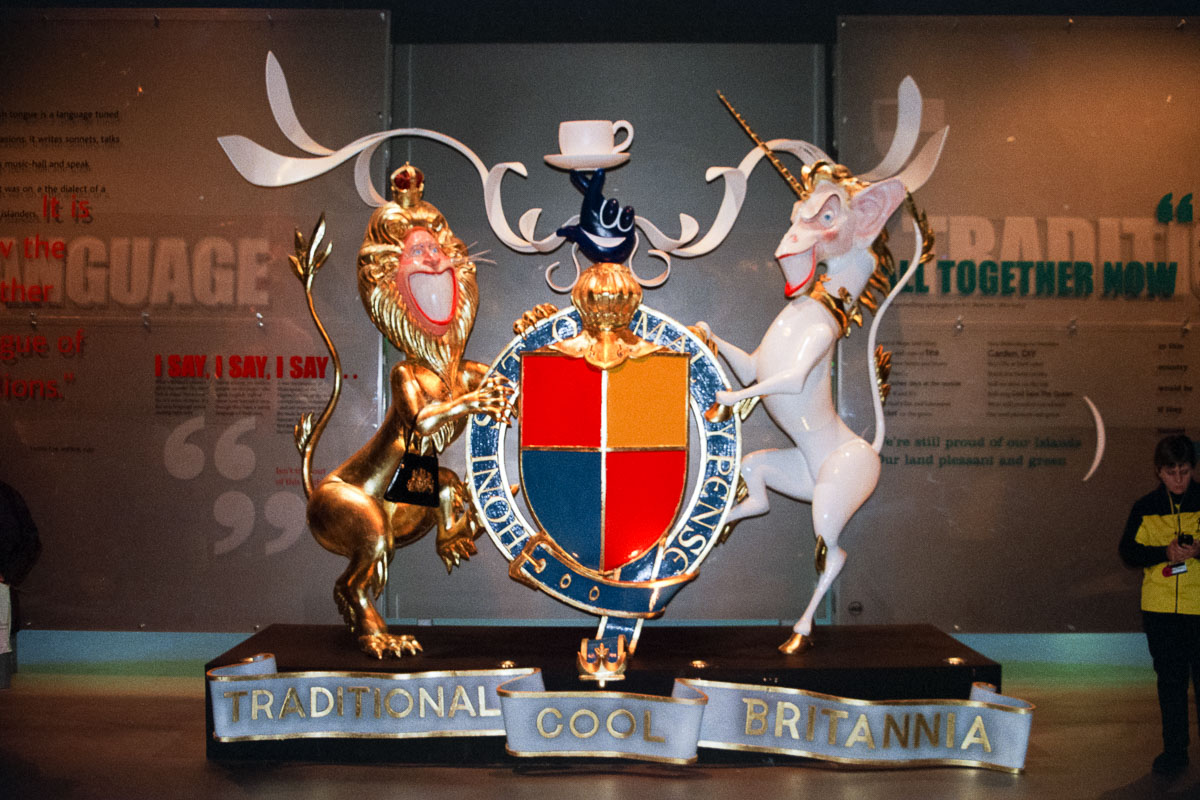
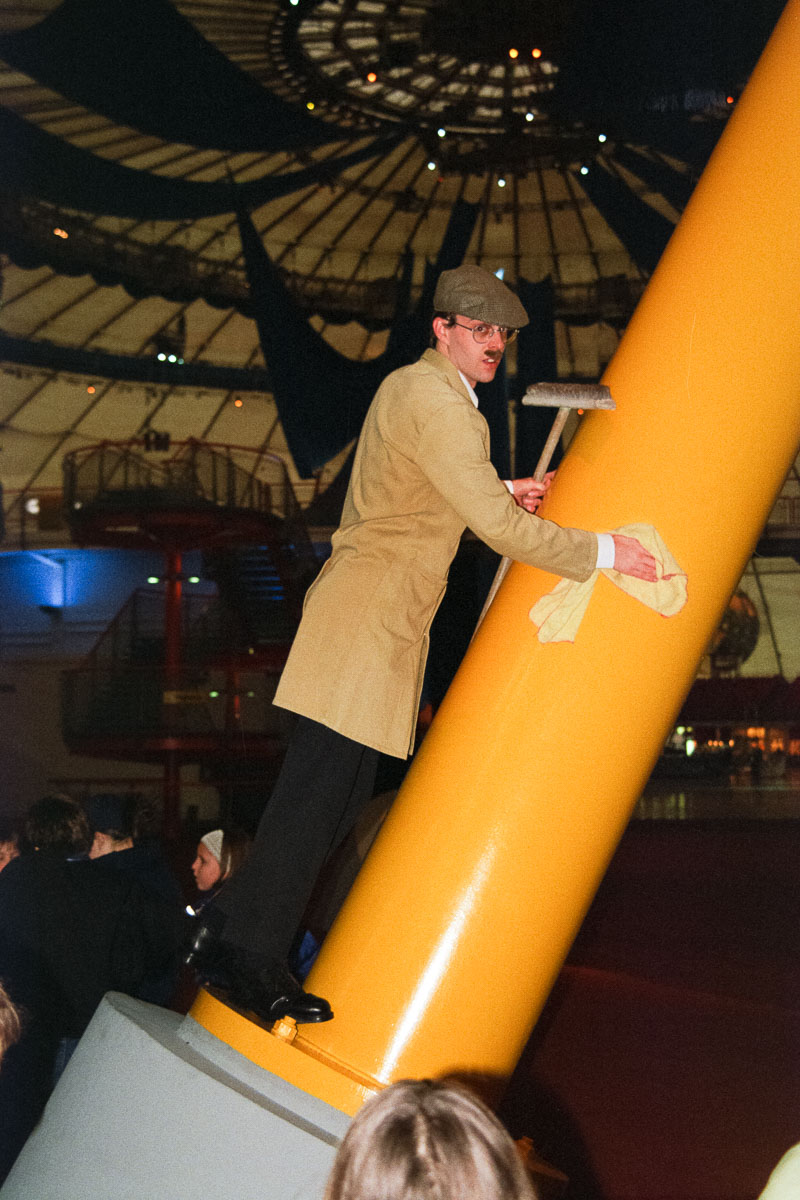
At a Glance: Inside the Millennium Dome (2000)
- Opened: 1 January 2000 | Closed: 31 December 2000
- Contained 14 themed zones exploring science, identity, faith, work, and the environment
- Designed by architect Richard Rogers and engineered by Buro Happold
- Attracted over 6 million visitors in its single year
- Redeveloped as The O₂ Arena, now one of the UK’s premier entertainment venues
What Was the Millennium Dome?
The Millennium Dome was a large-scale exhibition space and the UK’s flagship project to celebrate the third millennium. Designed by architect Richard Rogers and engineered by Buro Happold, the dome-shaped building is undeniably a remarkable feat of engineering.
But did you know the Dome’s architecture symbolises the passage of time in several ways? Firstly, the diameter of the Millennium Dome is 365 metres (one for each day of the year). Additionally, its height is 52 metres (weeks in a year). Finally, 12 masts (representing the months) support its vast tensile canopy.
The Dome was purpose-built to house the year-long Millennium Dome Experience. This Great Exhibition was divided into 14 themed zones, exploring everything from identity and faith to technology and the environment. Despite political wranglings, over six million people visited, making the Millennium Dome exhibition one of the UK’s biggest indoor visitor attractions.
When Did the Millennium Dome Open and Close?
The Millennium Dome opened on 1 January 2000 and closed on 31 December 2000. Though short-lived, it remains a striking reminder of Britain’s hopes and anxieties at the turn of the new millennium.
I visited on a grey January morning. Dark clouds loomed over the white fabric roof—a metaphor for the storm of criticism the project received. Yet once inside, I discovered something unexpected: an inventive and imaginative vision of Britain’s future.
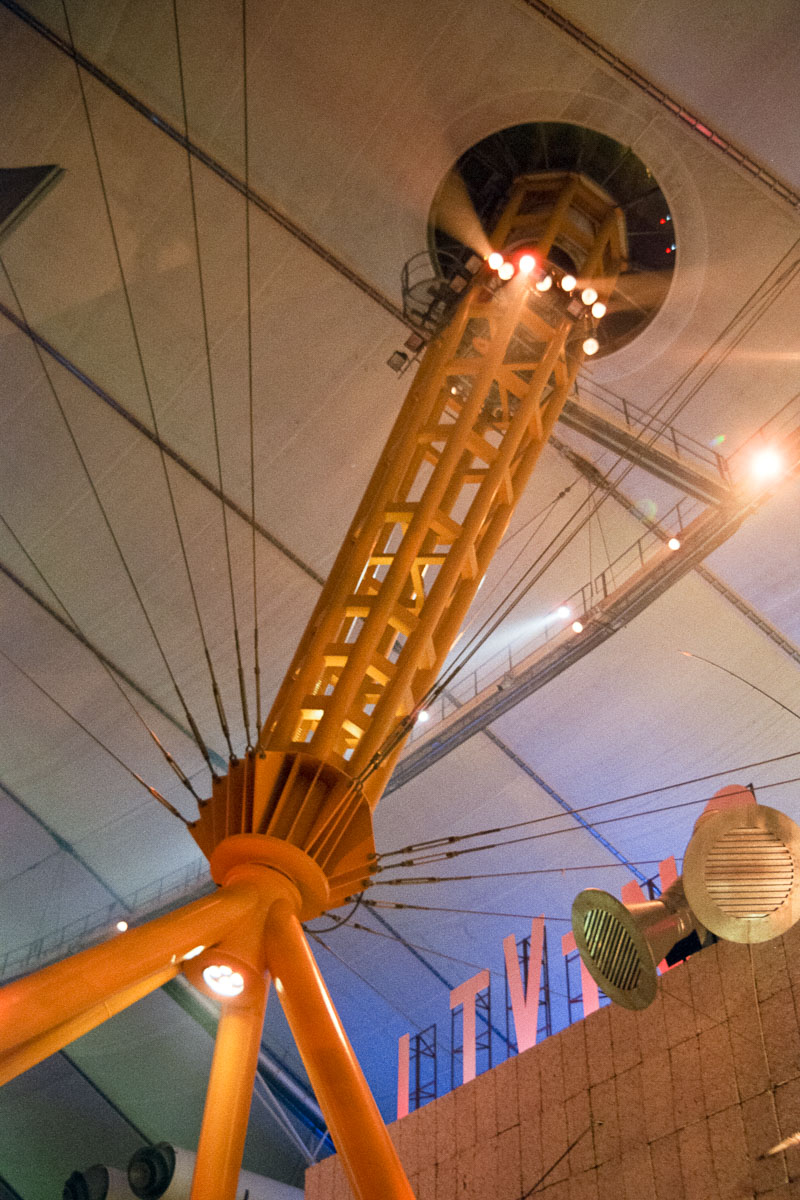
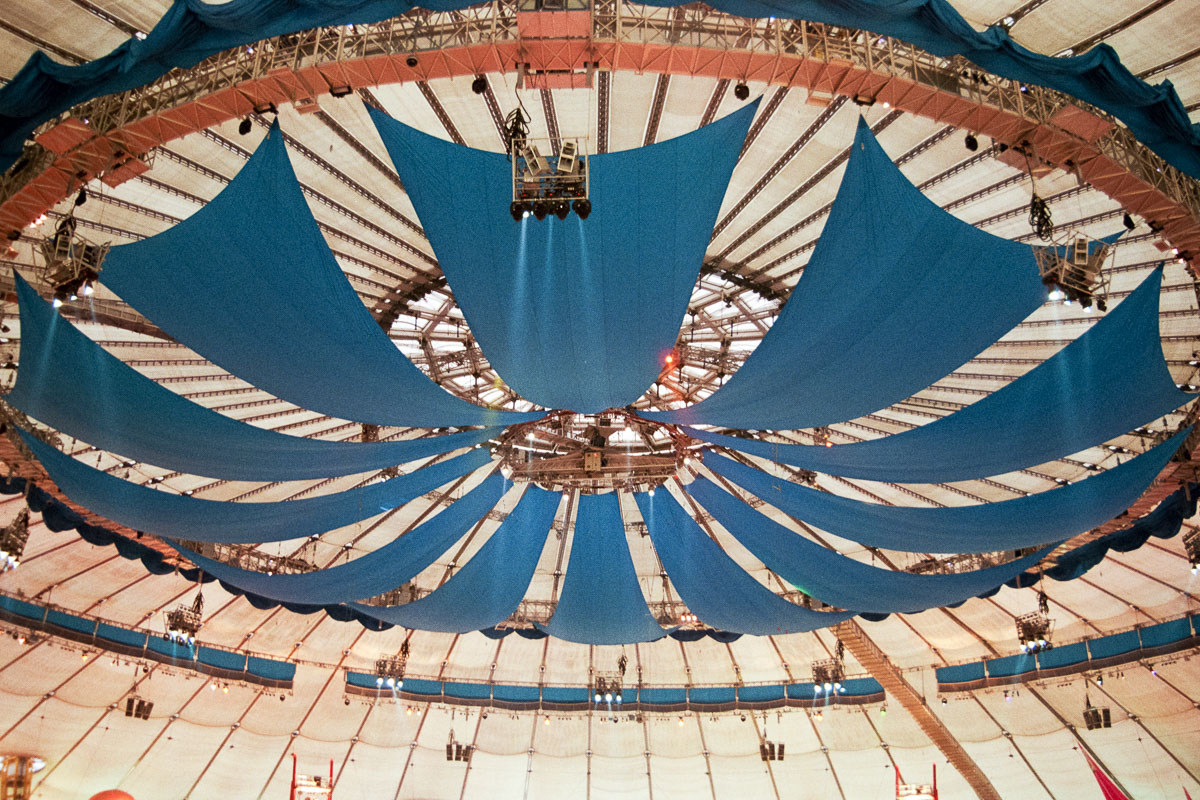
Exhibition Zones Inside the Millennium Dome
Inside one of the world’s largest enclosed spaces, three broad themes structured visitors’ experience, each encompassing several of the fourteen exhibition zones. Specifically:
- Who We Are – Body, Faith, Mind, and Self-Portrait.
- What We Do – Work, Learning, Rest, Play, Talk, Money, and Journey.
- Where We Live – Shared Ground, Living Island, and Home Planet.
Let’s go inside the Millennium Dome and explore what made this national exhibition unique and memorable.
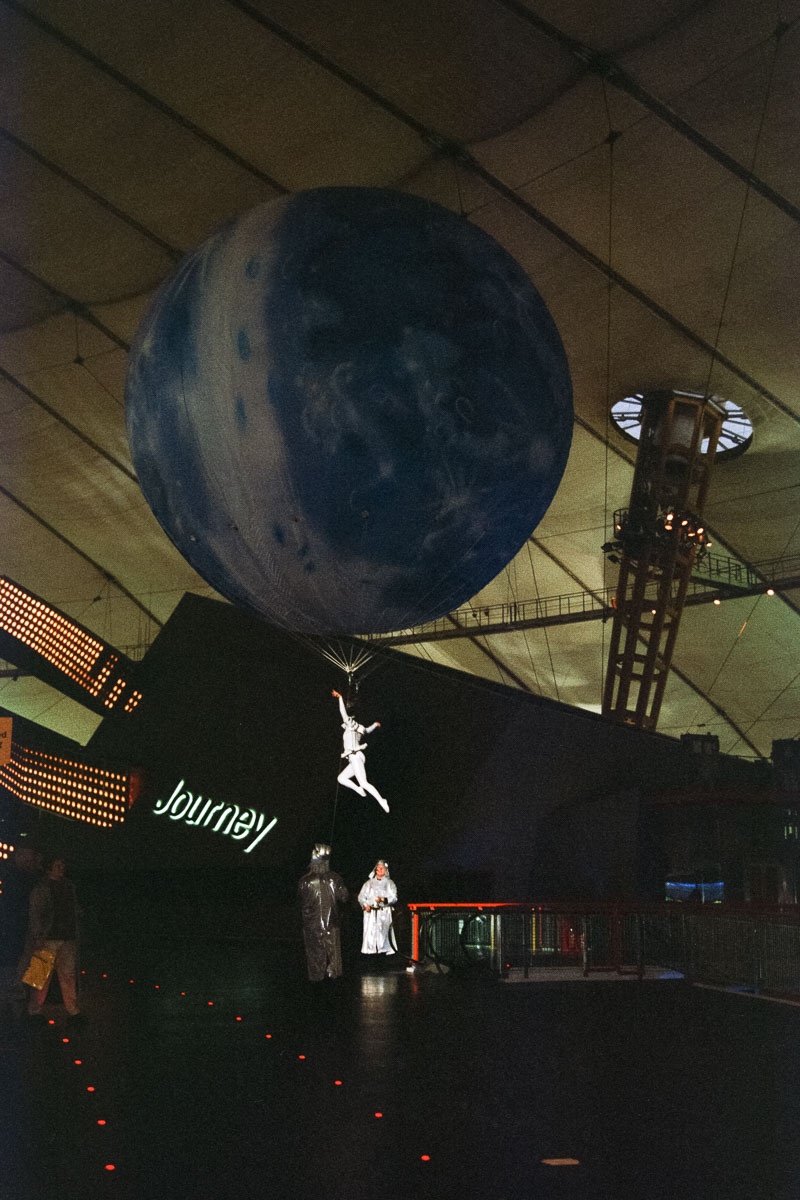
Inside the Millennium Dome: Who We Are
This theme explored what it means to be human.
Body Zone
The Body Zone instilled a sense of wonder in human biology. It was perhaps the most memorable structure: shaped like two reclining figures, shimmering with 80,000 lenticular tiles. Inside, visitors could walk through the body, discovering how it worked through exhibits, such as:
- A giant model of a beating heart, showing how much power our blood vessels need to keep pumping.
- A model of dancing brains wearing hats, offering a comedic take on emotional processing.
Beyond our bodies, visitors could also discover health choices shaping our future well-being.
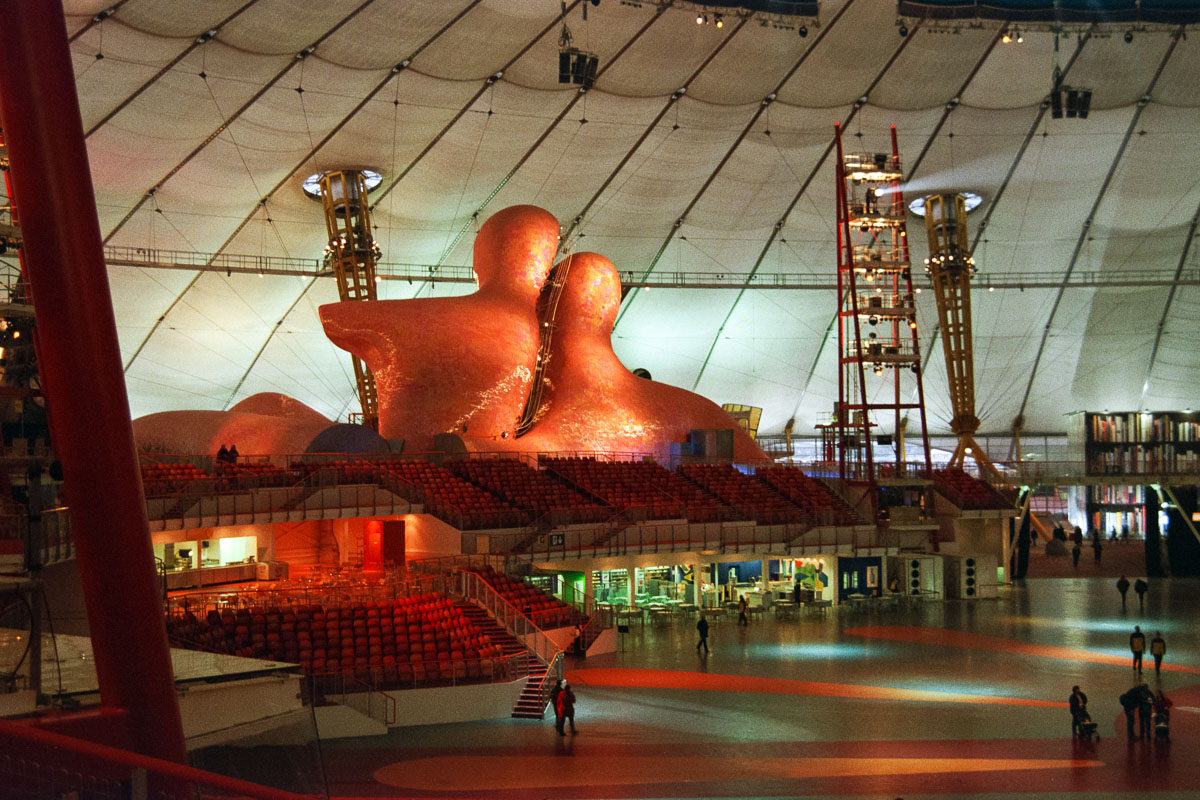
Mind Zone
Through multimedia installations and interactive exhibits, the Mind Zone explored how the brain works and plays tricks on us. In particular, visitors could look at various aspects of the mind: Intelligence, Perception and Illusion, Language, and The Potential of the Mind.
Ironically, I took no photos in this area—a bizarre oversight given my expertise in psychology.
Faith Zone
Inside the Faith Zone, striking photo stories on tall pillars portrayed key life stages (e.g., Birth, Initiation, Family, Alive & Wonder, Learning, Death, Awakening, Marriage, and Community) from the perspective of nine major religions.
Consequently, this contemplative, almost sacred space urged visitors to pause and reflect on life’s universal experiences.
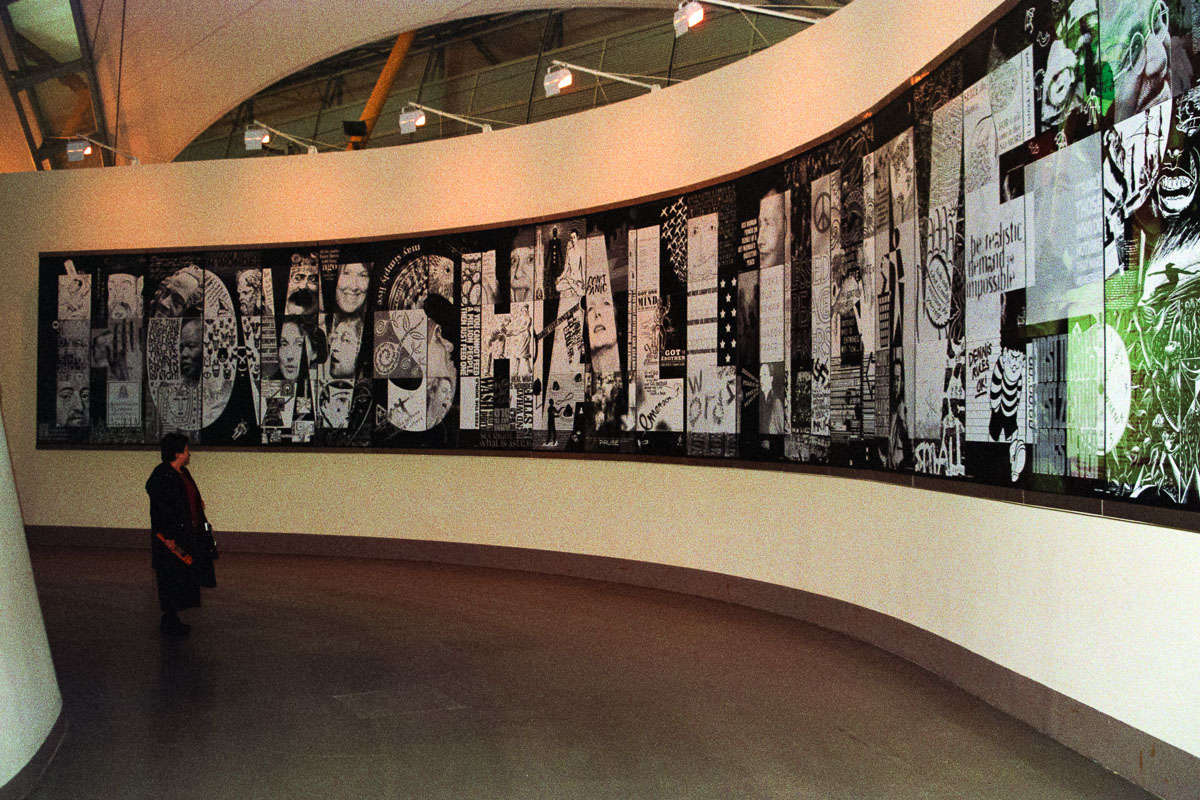
Self-Portrait Zone
The Self-Portrait Zone celebrated what it meant to be British in 2000. Over 400 images submitted by the public—from the Brown Betty teapot to the Union Jack—lit up and rotated around a huge glowing drum. Hence, a miniature portrait of Britain.
The standout exhibits for me? Grotesque sculptures by political cartoonist Gerald Scarfe. They mocked racism, football hooliganism, and media addiction—satirical, bold, and unforgettable. These sculptures also countered the positive aspects of the Dome.
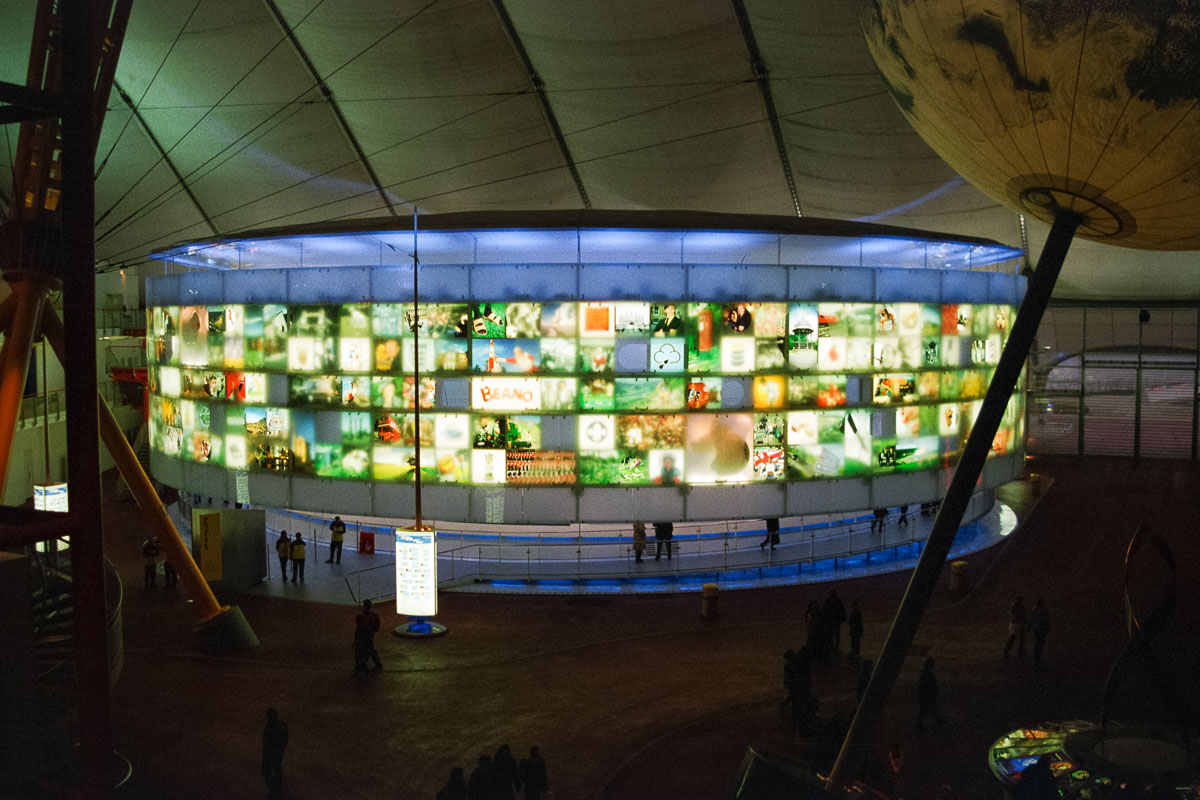
Inside the Millennium Dome: What We Do
This theme looked at how we live.
Work Zone
Gone was the idea of a “job for life.” Instead, the Work Zone promoted six core skills for success in the modern workforce (e.g., Communication, Numeracy, Problem-solving, IT skills, Hand-eye coordination, and Teamwork).
Another favourite exhibit, for example, was a giant table football game promoting teamwork. In addition, a display of five thousand Post-It Notes relayed messages about work practices.
Above all, this zone warned against boredom in the workplace, emphasising the importance of continuous skill development.
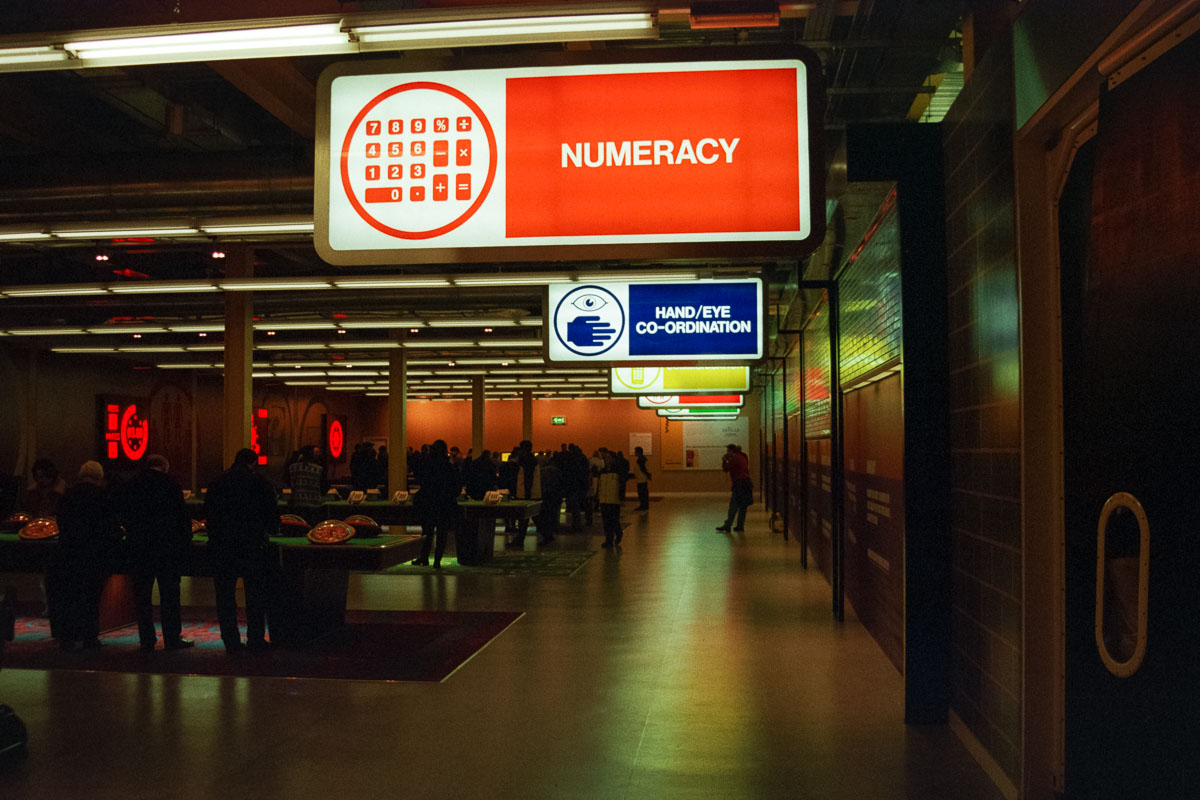
Learning Zone
The Learning Zone stressed lifelong education as key to opening new job opportunities through three oversized areas. For example:
- School Corridor – recreated school life through authentic sights, sounds and smells.
- School Hall – featured The Magic Seed, a BBC short film showing how learning can transform lives.
- Infinite Orchard – captured visitors’ images and placed them centre-stage in an interactive adventure.
These immersive spaces championed education not as a phase but as a pursuit of life’s goals, especially in a changing job market where adaptability is key.
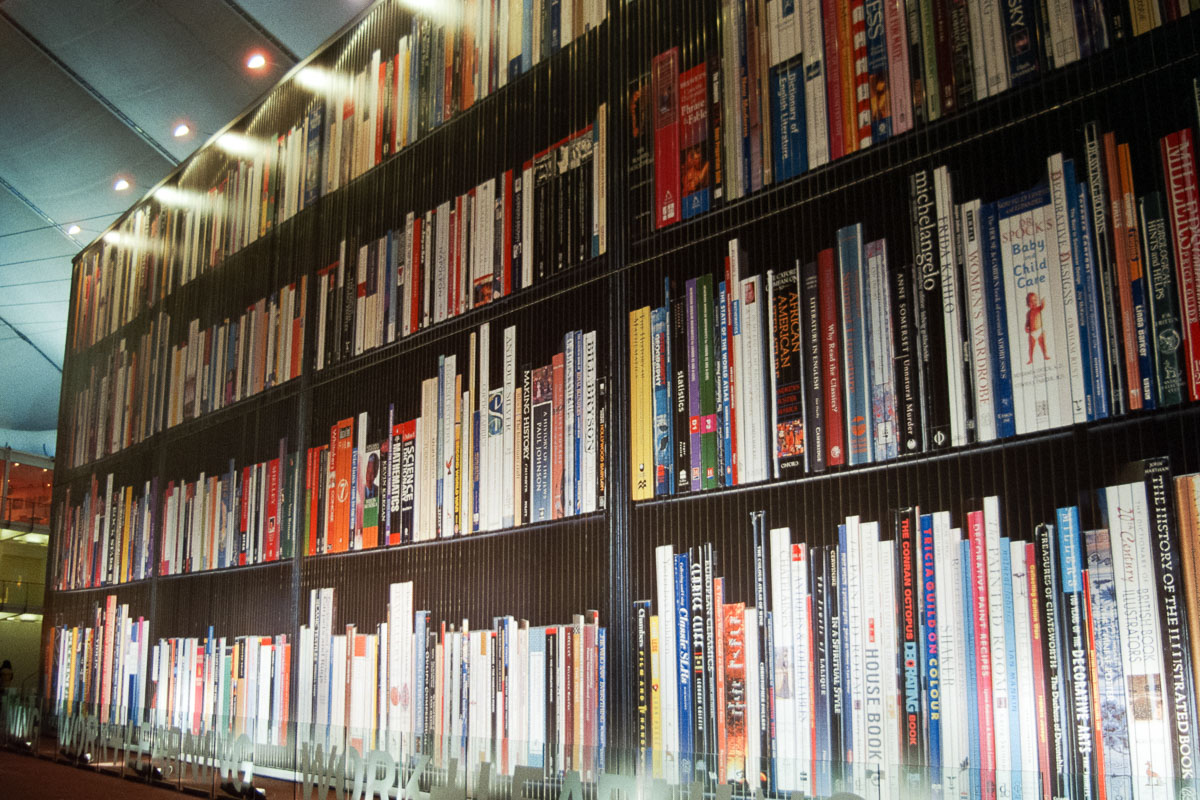
Rest Zone
With soothing lights, calming sounds, and refreshing scents, the Rest Zone provided a tranquil space for visitors to relax, besides stressing (no pun intended) the importance of slowing down.
Its centrepiece, Longplayer, was a musical composition designed to last 1,000 years, with no two moments ever the same.
Play Zone
From sports to leisure, music to arts, and hobbies to games, the Play Zone highlighted the evolution of recreation. It also challenged visitors to discover things they didn’t know. Consequently, it was a hit with kids and adults alike.
In short, this fun zone reminded us of the lost value of real-world play in sparking creativity, problem-solving, and genuine relationships—elements increasingly overlooked in today’s digital-dependent and social media-absorbed society.
Talk Zone
The Talk Zone foresaw the human value of communication and new technologies, which appeared futuristic back then. At the entrance, a timeline traced our journey from 4000 BC to the digital age, from smoke signals to the Internet.
Upstairs, videophones and other innovations demonstrated the future of communication, hinting at how we share information and knowledge today.
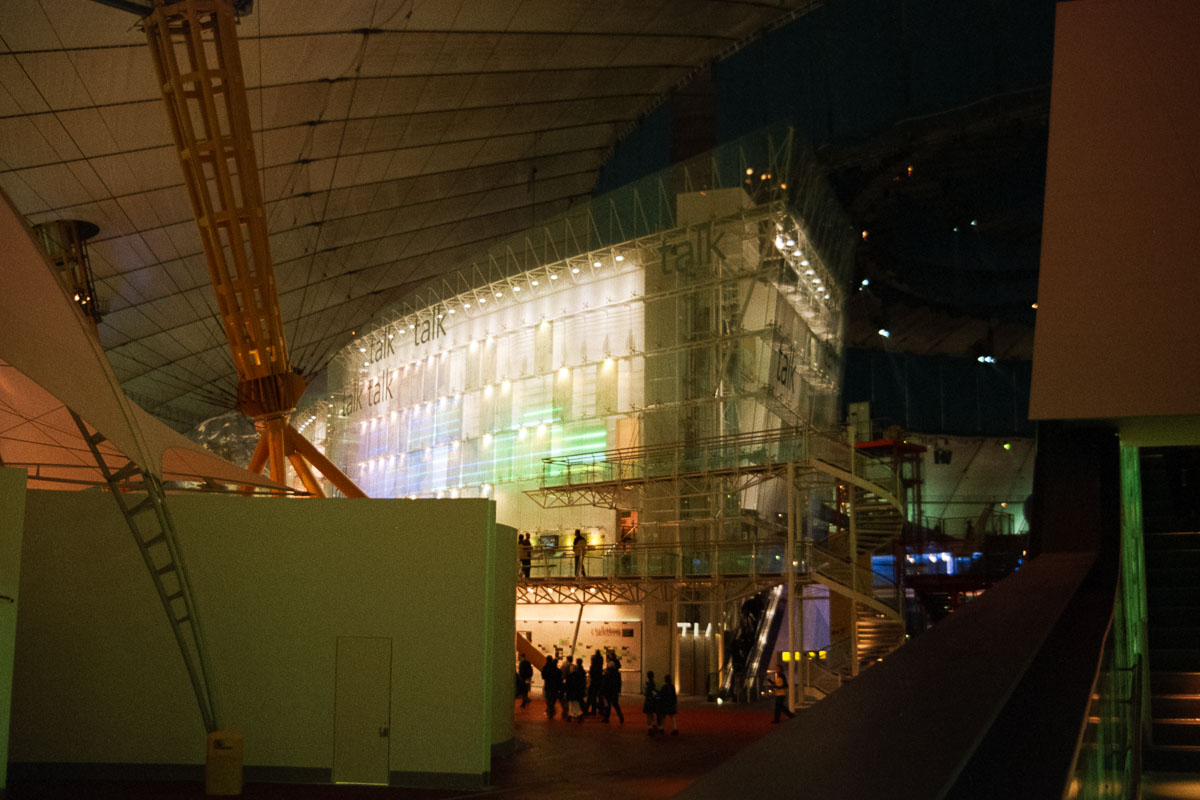
Money Zone
Perhaps the most striking exhibit was a real £1 million in £50 notes behind glass in the Money Zone, which dealt with society’s fascination with wealth and spending.
Additionally, visitors could “spend” a virtual fortune in 60 seconds and then reflect on the consequences of global consumption if everyone did the same.
Journey Zone
The Journey Zone chronicled the evolution of human transportation—from ancient methods to futuristic concepts. Sponsored by Ford, this area explored potential innovations across land, sea, and air (e.g., high-speed trains, carbon-fibre yachts, and space tourism).
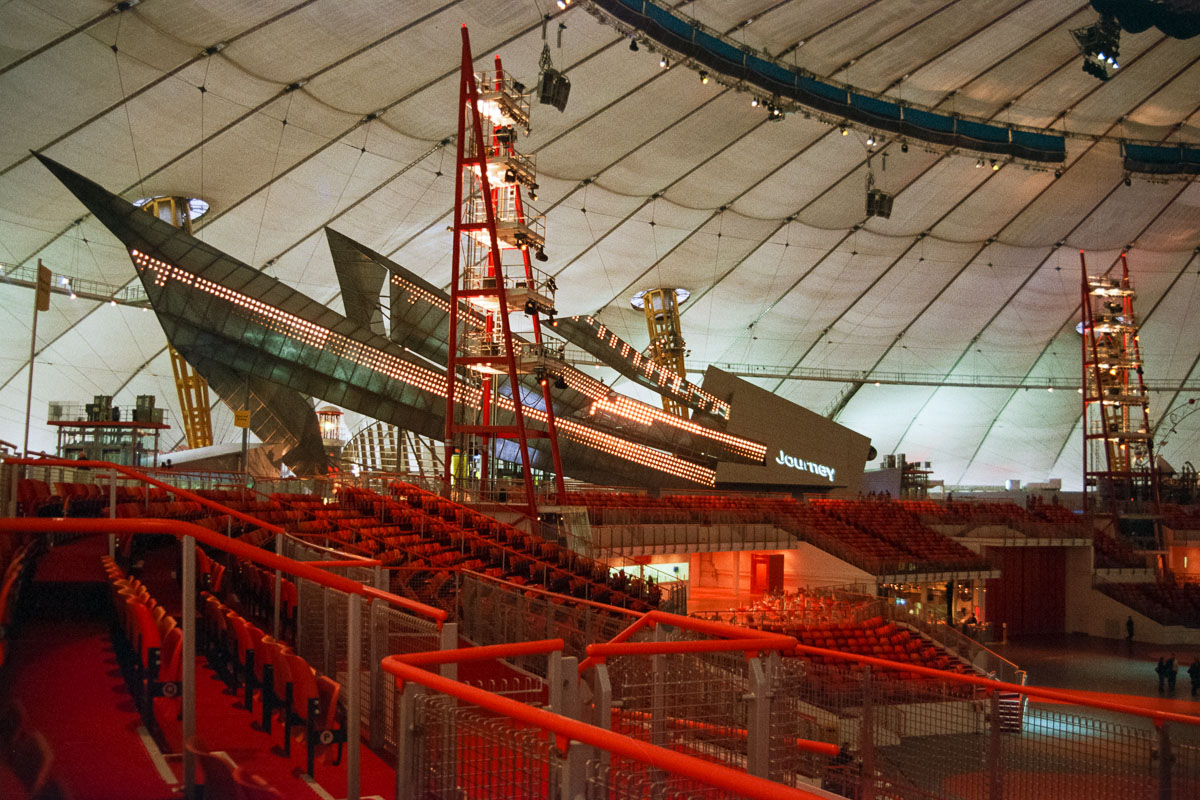
Inside the Millennium Dome: Where We Live
This theme explored how we live together.
Shared Ground
Made from recycled cardboard, Shared Ground explored the importance of neighbourhood and community (i.e., the idea of social connectedness). It highlighted how diverse societies shape Britain’s identity, promoting unity through understanding and tolerance.
Here, visitors could also record messages for a time capsule—many of which played aloud as you moved through this eco-conscious zone.
Living Island
Based on a traditional seaside resort with cliffs, a lighthouse, and a beach, Living Island promoted environmental and sustainability themes.
Besides the light-hearted interior, visitors entered this area through the “Tunnel of Love,” setting a playful, welcoming tone.
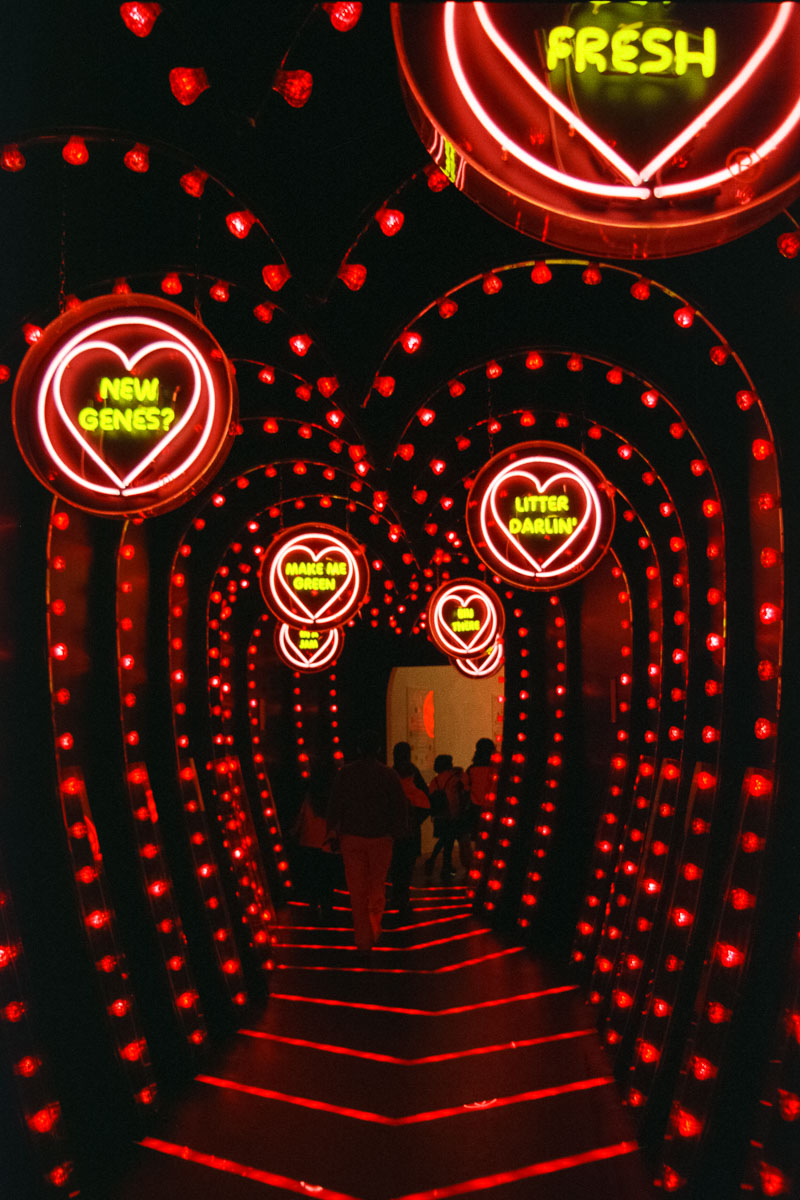
Home Planet
Home Planet explored our planet’s uniqueness and place in the universe. Furthermore, a simulated journey through inner and outer space—guided by animated aliens—brought big questions down to Earth.
Nearby, floating above it all, was a 12-metre model of Earth—a striking landmark on the Millennium Dome map.
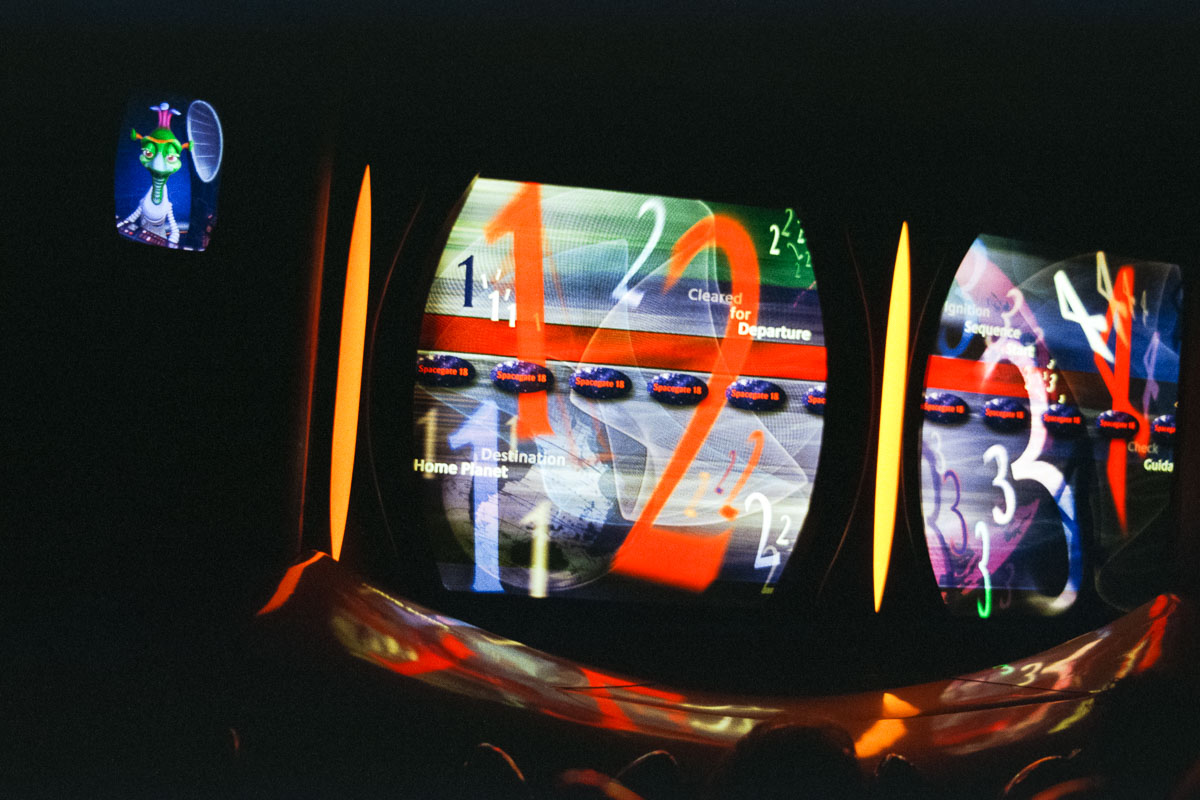
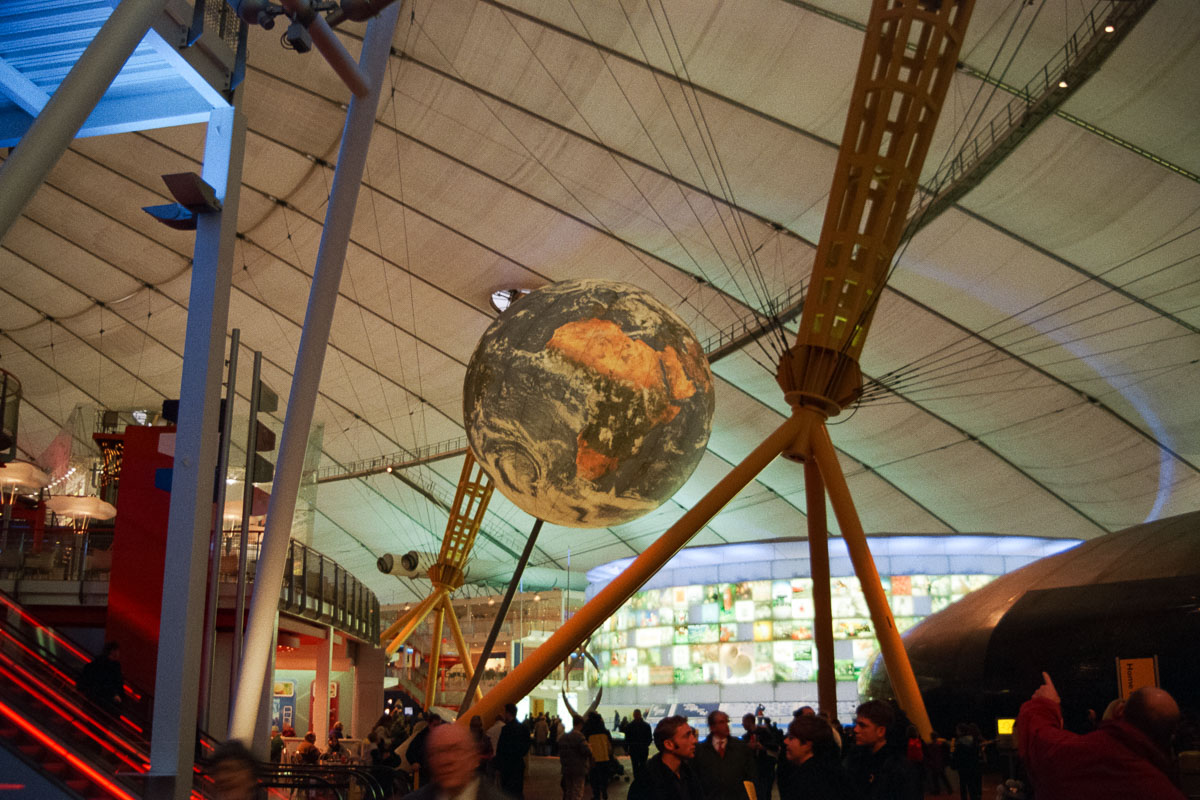
Other Attractions Inside the Millennium Dome
These contributed to the Millennium Dome’s overarching theme. Namely, celebrating everyday life in Britain in 2000.
Timekeepers of the Millennium
This futuristic exhibit explored the concept of time with alien guides Coggs and Sprinx. Behind the Stonehenge entrance, it contained things collected on their travels (e.g., Da Vinci’s flying bicycle).
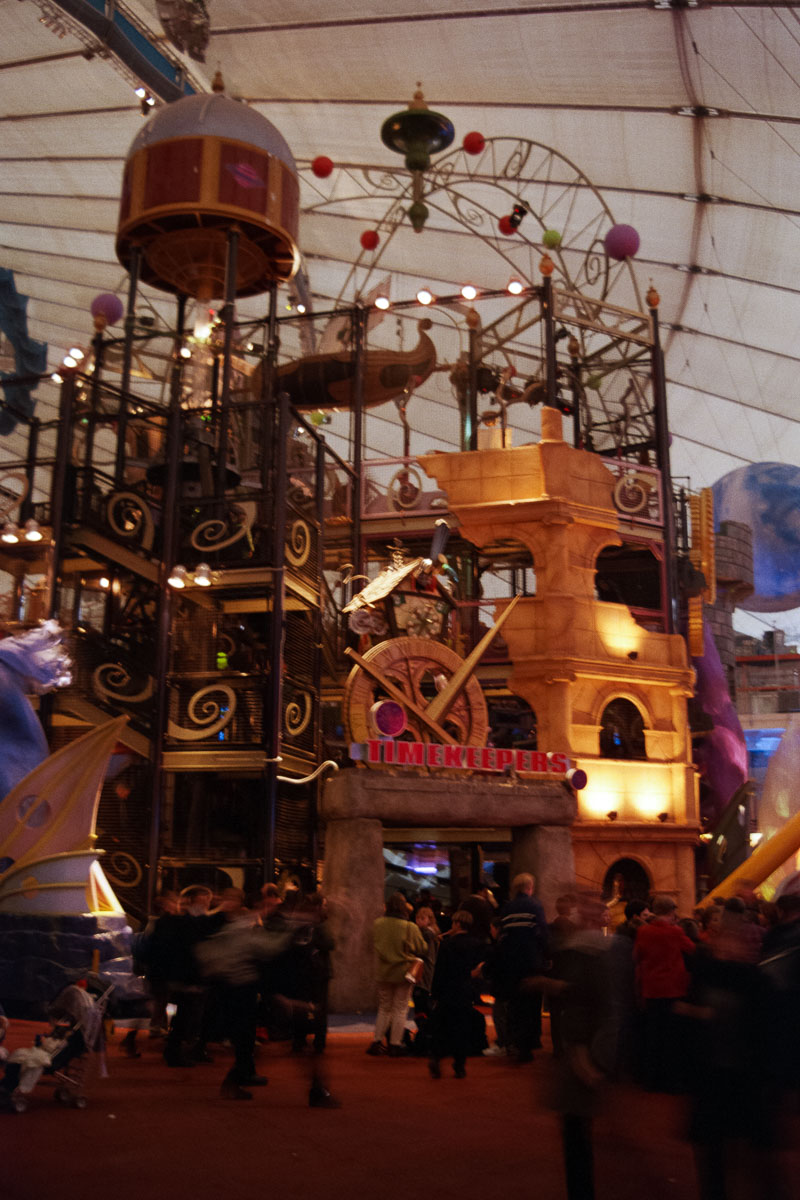
The Millennium Show
A stunning aerial performance by gymnasts, dancers, and actors, with music by Peter Gabriel. The show told a Romeo & Juliet-inspired love story, which performers played out in the central arena, under the Millennium Dome’s roof. In essence, the show was part theatre, part circus, and pure spectacle.
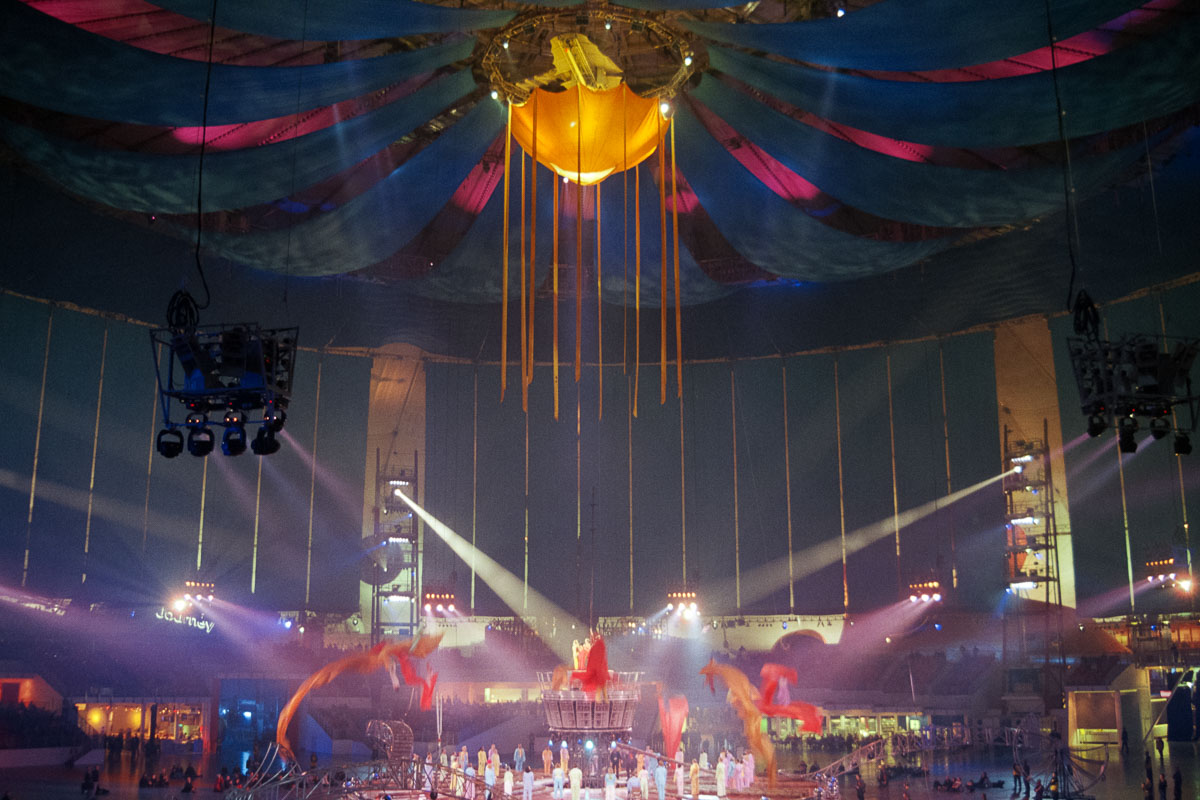
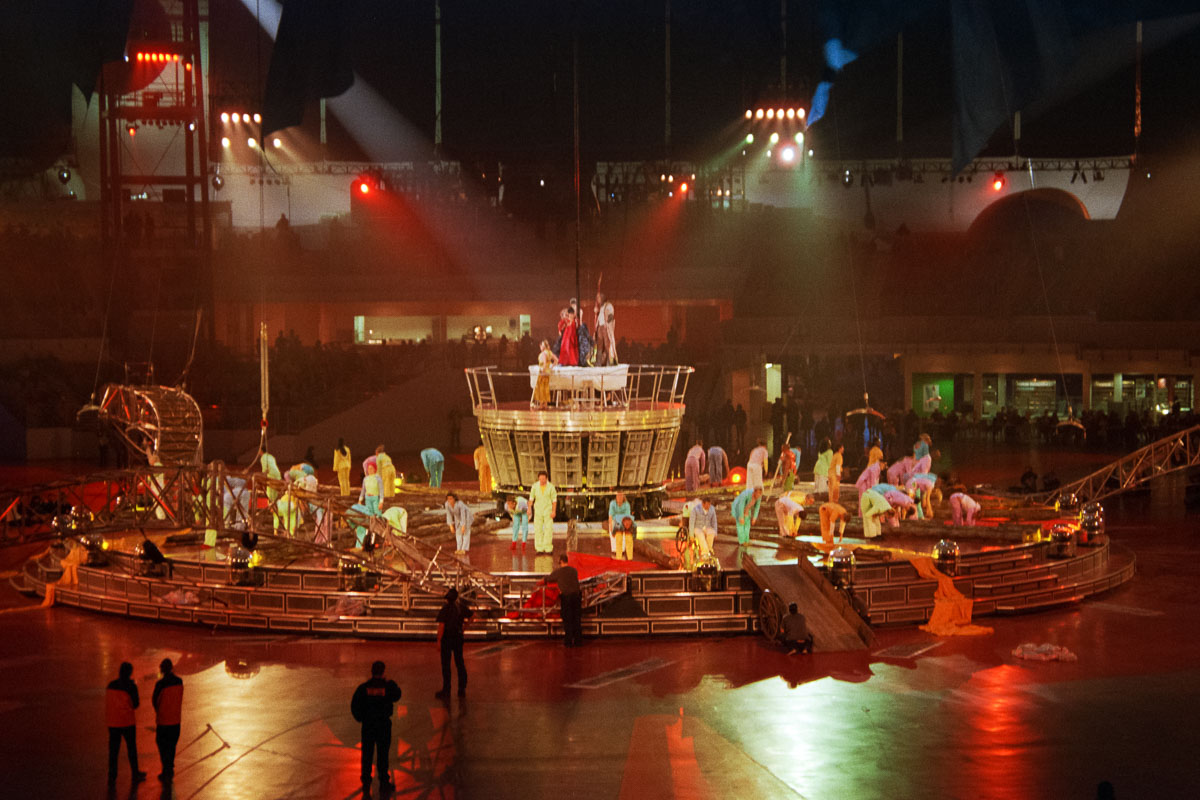
Our Town Stage
A nationwide project bringing together hundreds of local communities for grassroots performances under a pink canopy with spikes suspended from the roof.
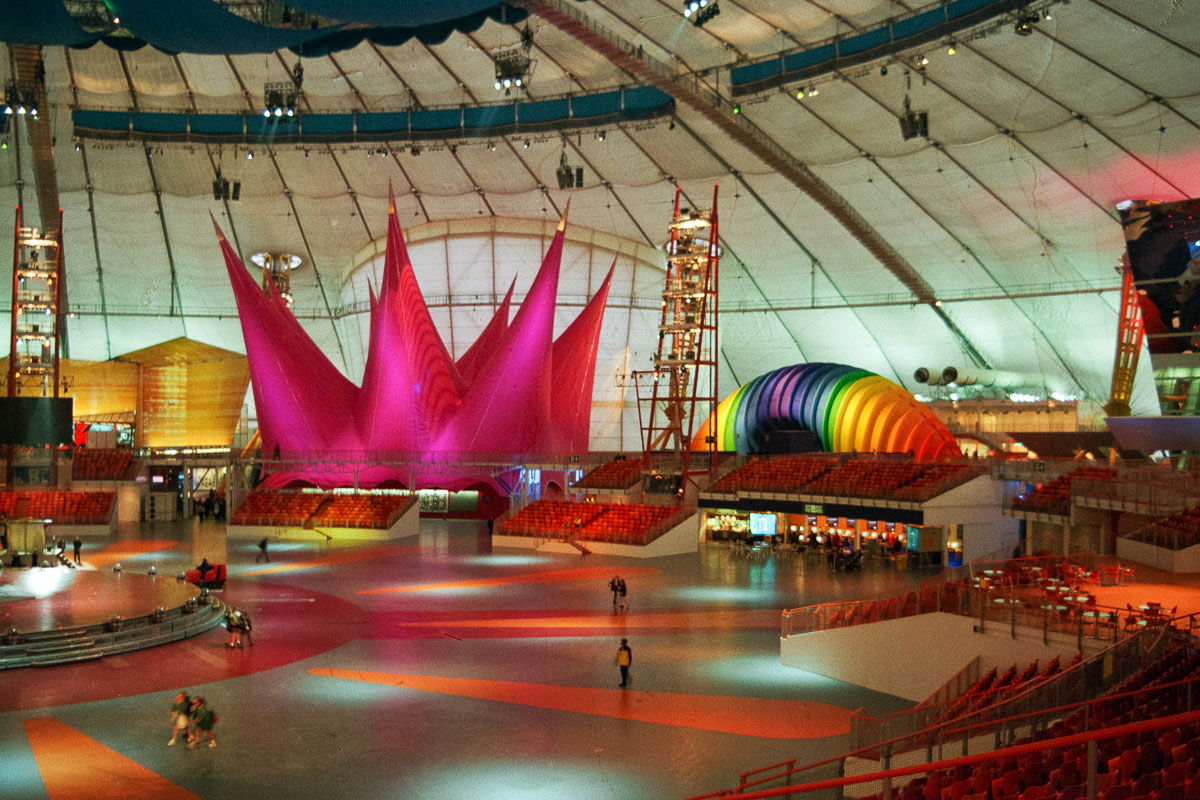
Skyscape
A cinema by day—screening British comedies like Blackadder—and a concert venue by night. Thus, Skyscape offered a glimpse of what the Millennium Dome is now—a major entertainment destination.
The Millennium Dome Diamond Heist
In November 2000, the Dome made headlines for a different reason: a criminal gang attempted to steal gems from the De Beers exhibit, only to be caught by the Flying Squad. Dubbed the Millennium Dome Heist, this real-life drama inspired Netflix’s The Diamond Heist mini-series.
Is the Millennium Dome Still Standing?
Yes—and it’s thriving, but it’s no longer called that.
What Is the Millennium Dome Now Known As?
Though short-lived, the Millennium Dome’s cultural legacy lives on. Today, it’s known as The O₂ Arena (or simply The O₂)—a world-class entertainment venue for concerts, sports, and cultural events.
So, if you’ve visited The O₂, you’ve stood beneath the same white fabric roof as the original Millennium Dome (2000) exhibition.
Final Thoughts on the Millennium Dome Exhibition and Legacy
Yes, the Millennium Dome exhibition was expensive, divisive, and seen by some as a London-centric vanity project. However, it was also inspiring. While some saw it as a symbol of government hubris, others experienced it as a time capsule of national pride.
As we reflect 25 years later, it’s clear that the Dome’s significance wasn’t just in what it delivered but in what it attempted. Its story reminds us that national projects can fail in execution yet succeed in ambition.
Today, the Millennium Dome stands not as a relic but as a repurposed icon—evolving with the country it once sought to define.
Want to Go Deeper?
If this post left you wanting to see more, you’ll love my follow-up:
👉 The Millennium Dome Human Body and Other Strange Exhibits—a deep dive into the strangest, boldest, and most surreal zones.
PHOTO DETAILS
Location: Millennium Dome, Greenwich, London
Date: 14 January 2000
Camera: Pentax MZ-50 (35mm SLR)
Film: Konica Centuria 200
Scan: Minolta DiMAGE Scan Elite 5400 using VueScan software
If this post brought back memories—or sparked curiosity—feel free to share or leave a comment. I’d love to hear what the Millennium Dome exhibition meant to you.

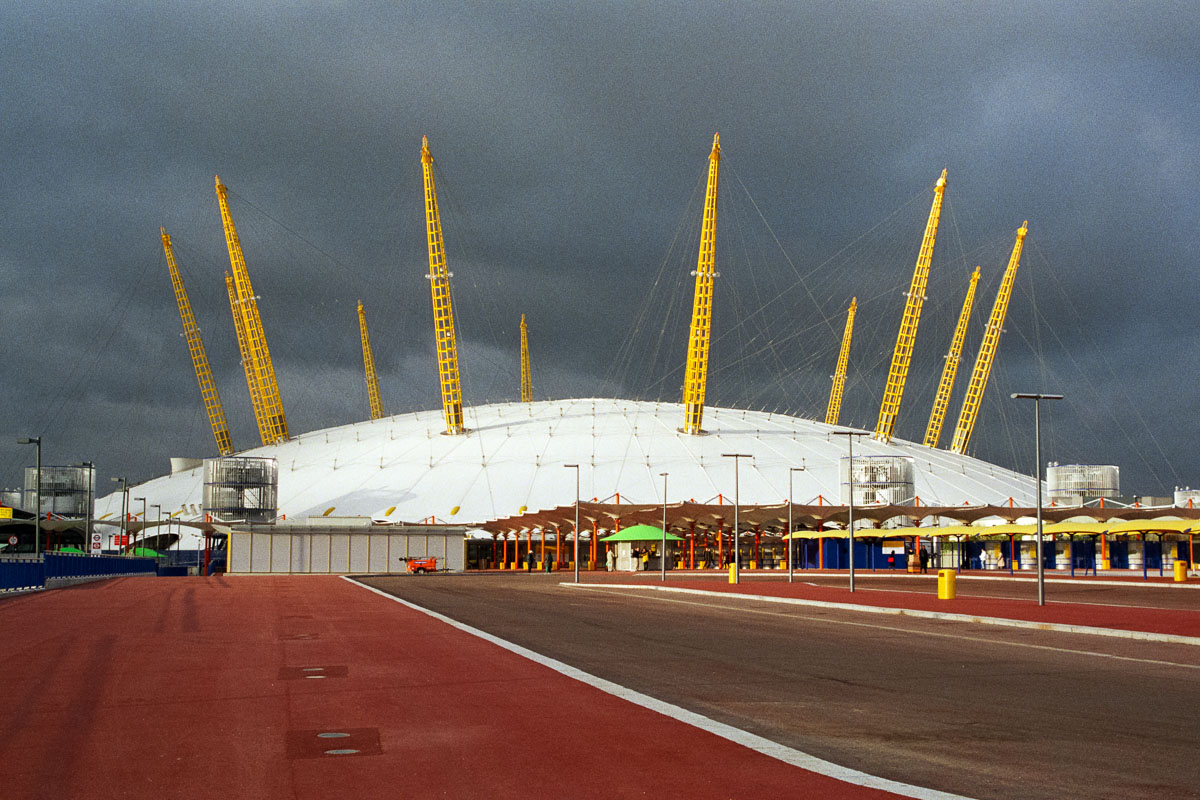
15 Comments
We were there in May of 2000 visiting from the U.S. loved it! Great pics! Also remember Mr. Bean movie, the girl that came out of the screen and lighting up the next room with a wand and going through the Nose in the body.
Thanks, Dave for sharing your memories of the Dome. It’s a pity the place wasn’t more popular, although it is today now it’s a major music venue. Take care. P.
By Post Author
I don’t recall a scene like that in the Mr Bean movie. Are you sure you’re not misremembering? Would love to see the scene you are referring to.
I recently listened to the podcast version of this Guardian article: https://www.theguardian.com/uk-news/2020/mar/12/millennium-dome-experience-disaster-inside-story-new-labour.
I was then so curious to see photos of the Dome in 2000 and found these pictures fascinating. Thank you for sharing them as well as your commentary.
Thank you Joanna for taking the time to comment. Take care.
By Post Author
These are so interesting to see!! 🙂
Thank you, Sam.
By Post Author
Thank you so very much for posting these pictures. I am so delighted to have come across them.
They have evoked many happy memories of two visits, when my son was 6 years old… (Now 30 !)
Sadly both my camera and video recorder, decided to ‘play up’ on both visits, so unfortunately, I have very little material to remind my son, of a very magical time.
Regards and again thanks.
Thanks, Laureen, for writing and for sharing your story. It’s amazing how photos can transport us back in time. I’m glad my pictures could help remind you (and your son) of your trips together. Take care, Paul.
By Post Author
We went to the dome in 2000 and wrote a message which was put into a capsule. They said they would be reopened in 50 years time. Do you know if this is still happening?
Hi Susan,
Thanks for dropping by. I’m not sure if the time capsule is still set to be reopened in 50 years—there’s some talk online about it possibly being disturbed by construction.
Best,
Paul
By Post Author
Hi Paul, loved your talk on C20 society this evening. I visited the dome aged 12, and have fond memories of it. I visited it 25 years ago this week, ironically. The show in the middle was the best bit, but I also liked the Human Body and Living Island Beach. Timekeepers of the Millennium was also a great play area. Your talk this evening and photos have made me feel nostalgic! Great times. I still have my Millennium Coin and Millennium Dome model.
My parents bought my ticket as a Christmas present, 1999. I remember the ticket was printed on a lottery ticket. (You could buy them from lottery terminals). I was really excited and remembered the date, 4th March 2000 I went.
The Millennium Dome was a success, in my opinion. It would be great if the O2 Arena did something to mark the 25th anniversary of the Millennium Experience.
Thanks so much for your comment, Neil! I’m really glad you enjoyed the talk and that it brought back such great memories. I agree—the Millennium Experience was a success and enjoyed by many, and it would be wonderful if the O2 marked the anniversary. Thanks again! Paul
By Post Author
My family made at least 3 trips to the dome as there was so much to see in one day. memorable moments were the acrobats high up and a brilliant show. only regret was not getting the DVD of the show as would love to see again. lovely photos from you also bring back memories. Thank You
Thanks for sharing your memories — I recently bought some memorabilia on eBay. I agree, the acrobats and show were unforgettable. Maybe you’ll find the DVD online!
By Post Author